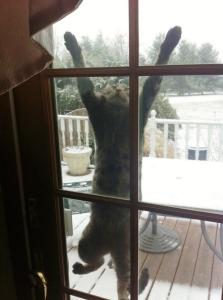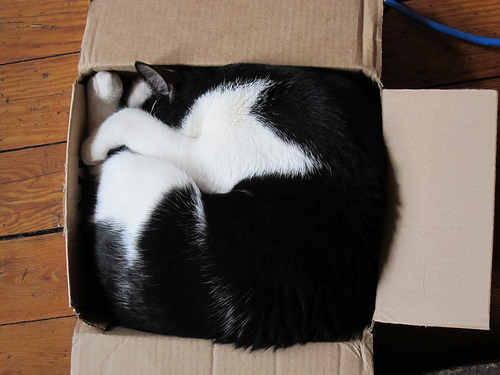Today’s question comes from Jim A.
I have a simple question:
If I say, “That’s the cat’s toy,” then “cat’s” is possessive and correct with an apostrophe. [Right-O, Jim. Continue.] But if I say, “Your cats outside,” I am making a contraction with cat and is. Should it be “cat’s,” which appears possessive or “cats,” which appears to be plural?
That’s a good one, Jim. The Grammar Cat comes to you from Texas, so we’re no strangers to blending two (or more) words into one for efficiency’s sake. The heat down here makes things melt into each other, and words are no exception.
Before we get right to it, let’s talk about an important use of the apostrophe. With the exception of possessives, the apostrophe functions as a placeholder for missing letters or numbers. That’s why we use it in contractions like can’t and didn’t. Can’t, of course, is short for cannot. Pull out the second n and the o, insert the apostrophe to indicate missing letters, and you have yourself the contraction. Similarly with did not, you can replace the o with an apostrophe, but you don’t replace the space between words with one. One of my personal favorites is shouldn’t’ve, which is actually three words squashed into one, because like I said, it’s hot down here. Must conserve energy. If there are still questions on it, you might check out our previous post that goes into more detail.
The same use of the apostrophe goes for numbers, specifically decades. Take for instance the 1980s, most famous for big hair, power ballads, and Alf.
When it’s shortened and the 19 is taken out, most people know instinctively that there should be an apostrophe in there somewhere, but that’s about where general understanding ends. So then we get a whole lot of the 80’s, which is incorrect. It should be the ’80s. That’s because what’s been taken out is the 19, which comes before the 80. Nothing’s been taken out between 80 and s, and it’s not possessive, so there shouldn’t be an apostrophe between the 80 and the s. However, if you’re talking about something that a decade possessed, you could add an apostrophe at the very end.
Example:
“Josie and the Pussycats was the ’70s’ most fabulous cartoon.” Of course, it sounds much better to say, “Josie and the Pussycats was the most fabulous cartoon of the ’70s,” or just not talk about Josie and the Pussycats at all.
So to answer your question, Jim, in the case you explained, you’re cramming together the words cat and is by removing one letter, which means that there needs to be an apostrophe to hold the place of the missing letter; therefore, the correct way to write it is, “Your cat’s outside.”





